Silky foliage is much appreciated for its softness and pleasing texture. Plants with velvety leaves often have tiny hairs that reflect the light, giving them a bright and silvery appearance. They come in many colors, not only green.
Most of them are especially suited to be grown indoors as elegant houseplants since they are usually tropical plants.
You might be curious to know why these plants have developed hair-covered leaves. The answer is that they provide a form of protection against the excessive sun, plus the hairs are also a way to survive drought, as they collect tiny drops of moisture.
- Related article: Houseplant Types
There are many plants with soft velvety leaves, but here we will talk about the most popular and beautiful ones.
1. Velvet Philodendron (Philodendron Gloriosum)
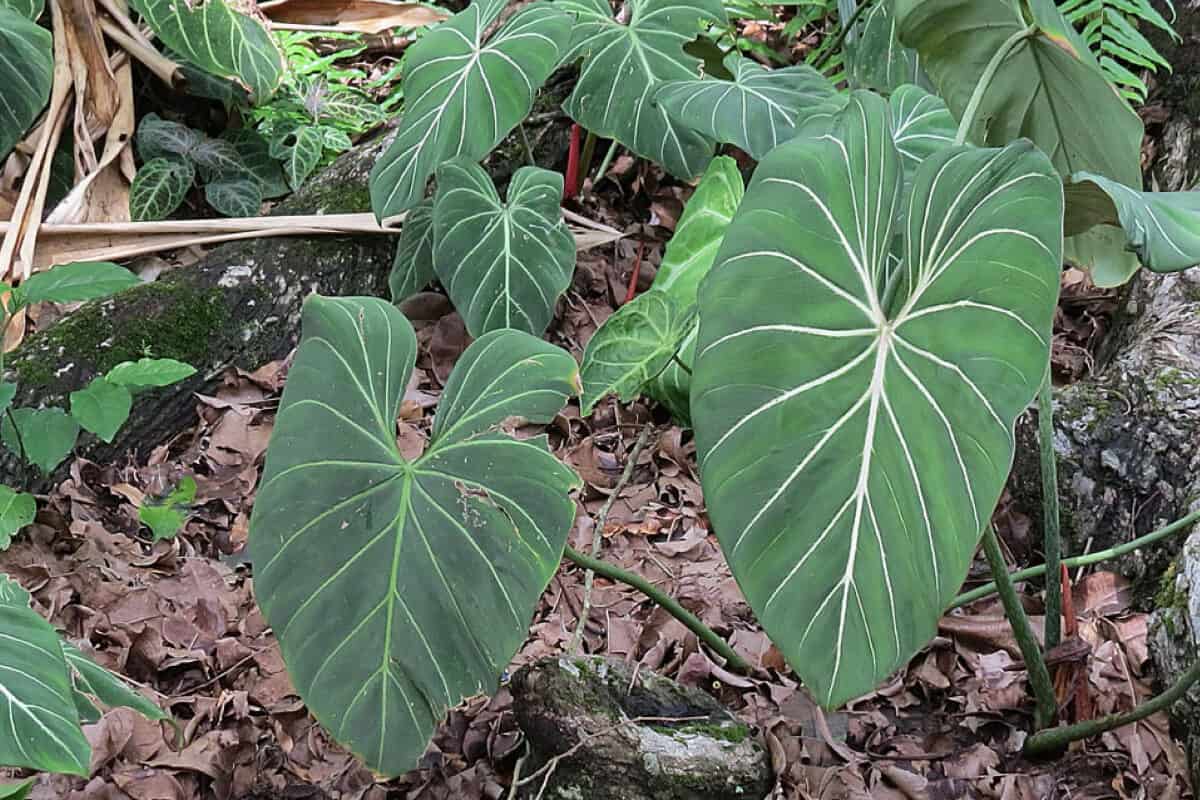
Philodendron gloriosum is a species native to Colombia but also common in other South American countries.
This plant is part of the Araceae family, together with many others that are particularly suited to be grown indoors. These plants need plenty of indirect light or its beautiful leaves would otherwise turn yellow.
When the Philodendron gloriosum is healthy, its attractive foliage is a velvety green color with very noticeable white veins. These can be creeper plants or climbers and they thrive in damp soil but not soggy.
2. Velvet Leaf Philodendron (Philodendron Micans)
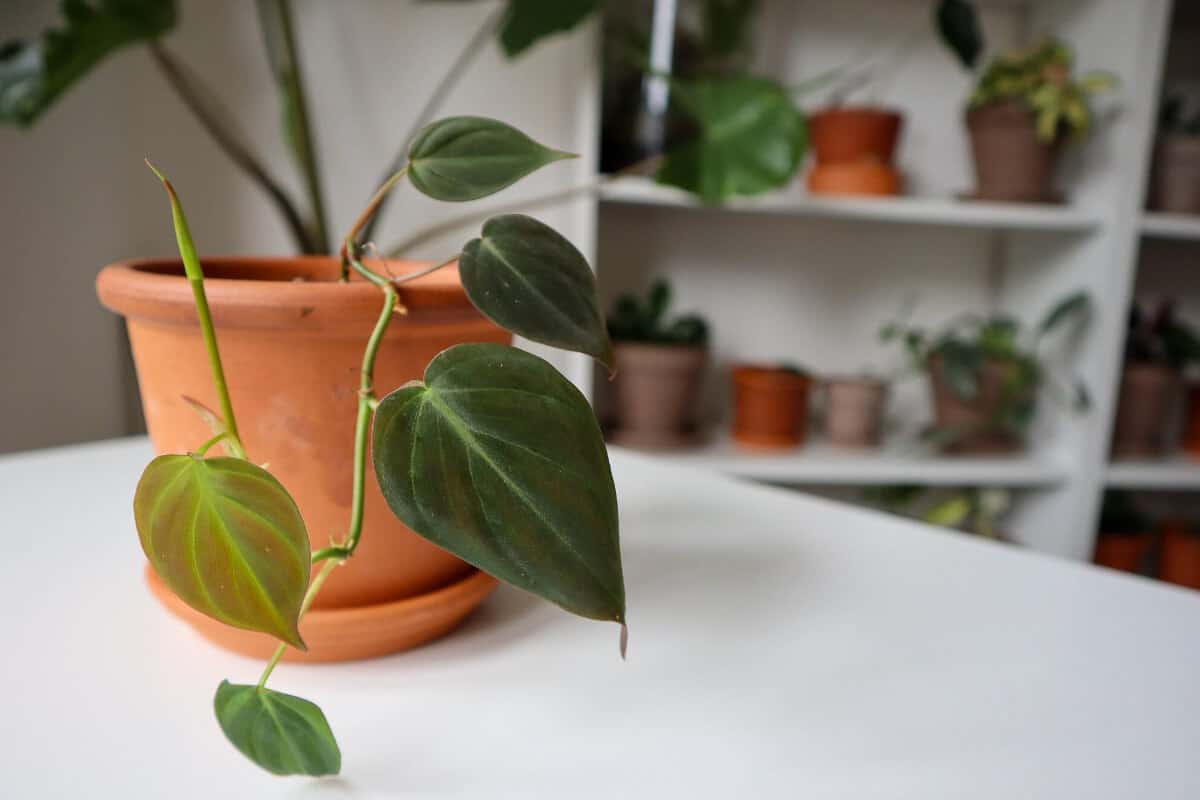
The Velvet Leaf Philodendron is also known as the ‘Sweetheart Plant’ because of its large, heart-shaped foliage.
This beautiful plant comes in shimmery colors that change from orange to magenta as the plant matures.
They also keep growing bigger and bigger, lending a tropical vibe to any room, and its flowers are a green-white color.
This Philodendron variety also needs indirect light, like many plants with big leaves. In the right conditions, it can grow up to 13 feet tall. You can either provide climbing support or leave it trailing down.
3. Philodendron gigas ‘Croat’ (Philodendron Gigas)
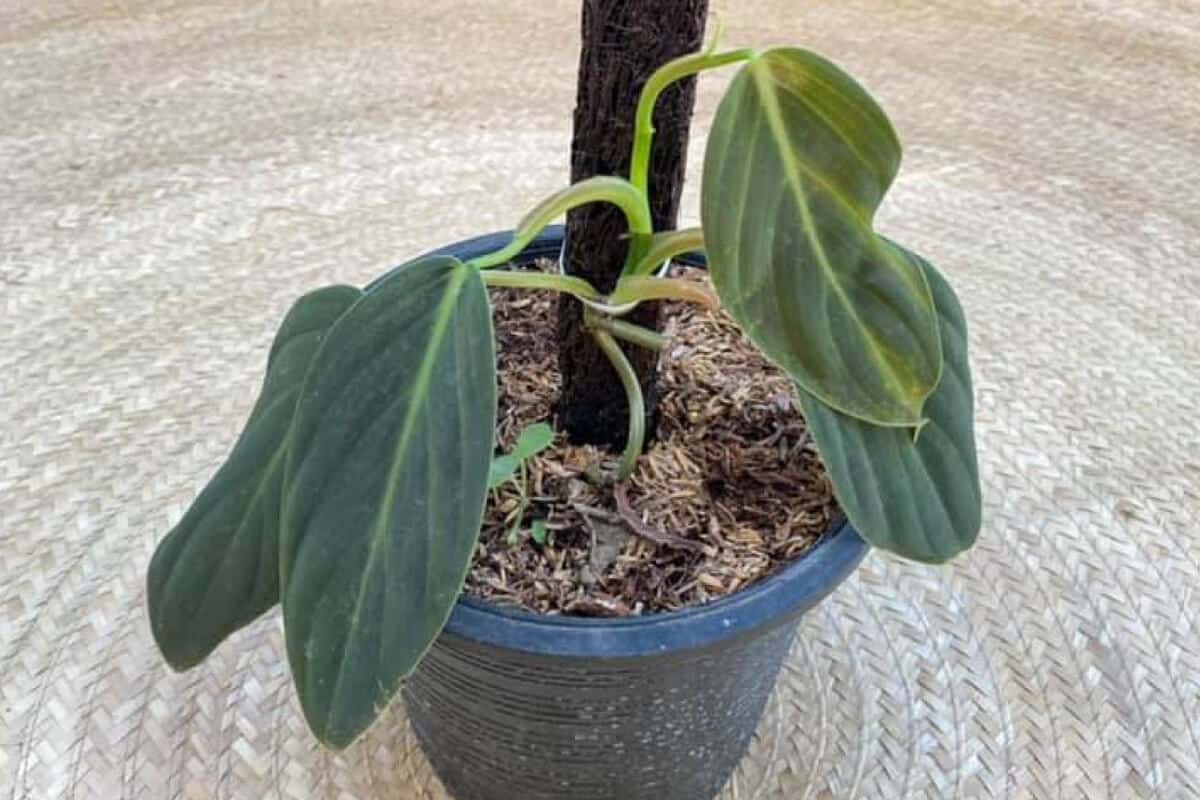
The Philodendron gigas are a bit different from other Philodendrons because of its elongated leaves. Its mature foliage is a deep green color, while when new, it has copper color undertones.
This Philodendron variety is quite easy to care for, both indoors and outdoors. It’s best grown in hanging baskets as the leaves can easily become 3 or 4 feet long.
Philodendron gigas plants need attention, especially during the warm season when it should be avoided exposure to direct sunlight. This plant also fears soggy soil, so be careful of overwatering.
4. Jungle Velvet Calathea (Calathea Warscewiczii)
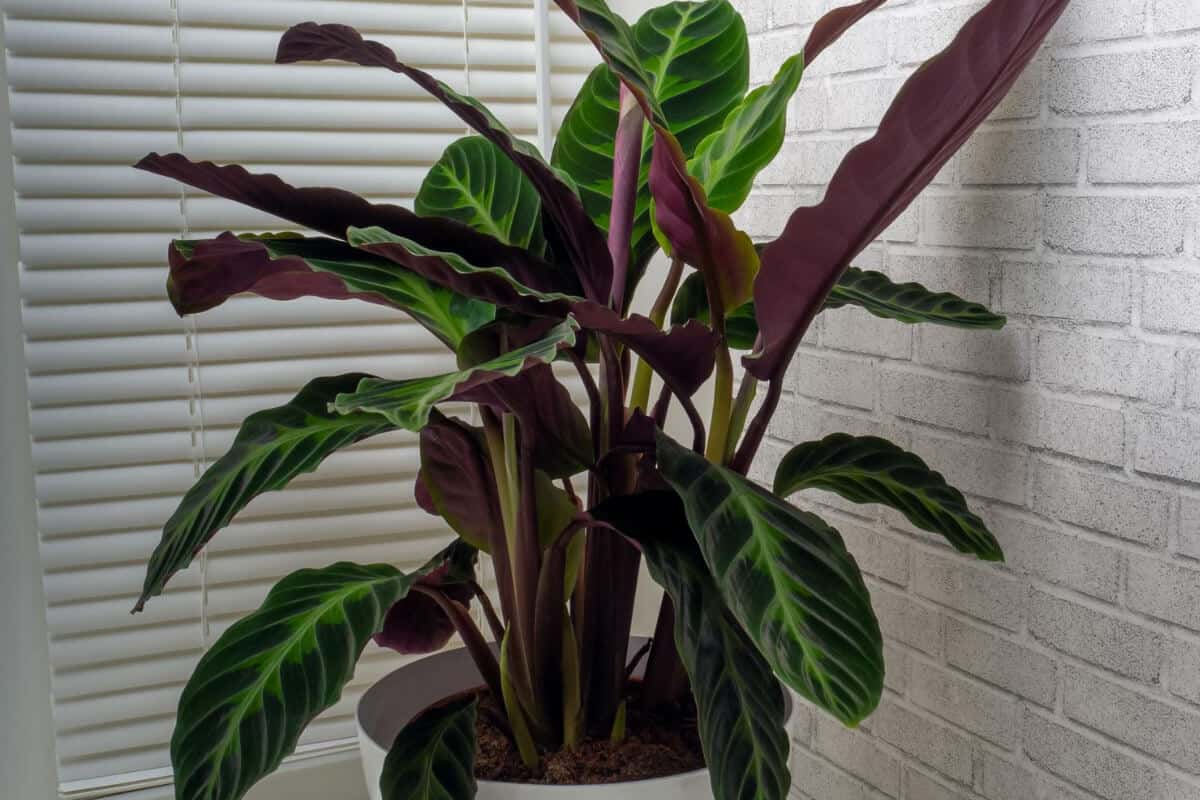
The Calathea Jungle Velvet is an exotic plant that has green, velvety leaves with a deep burgundy underside. They are characterized by unusual patterns that give the plant a unique appearance.
Native to South and Central America, this plant from the Prayer Plant family is quite difficult to care for.
To recreate its ideal conditions, you will need to provide plenty of bright, indirect light, constant soil moisture, and a consistently warm temperature.
If you manage to take care of it properly, it will give huge satisfaction as no two Calatheas will look the same.
5. Alocasia Black Velvet (Alocasia Reginula)
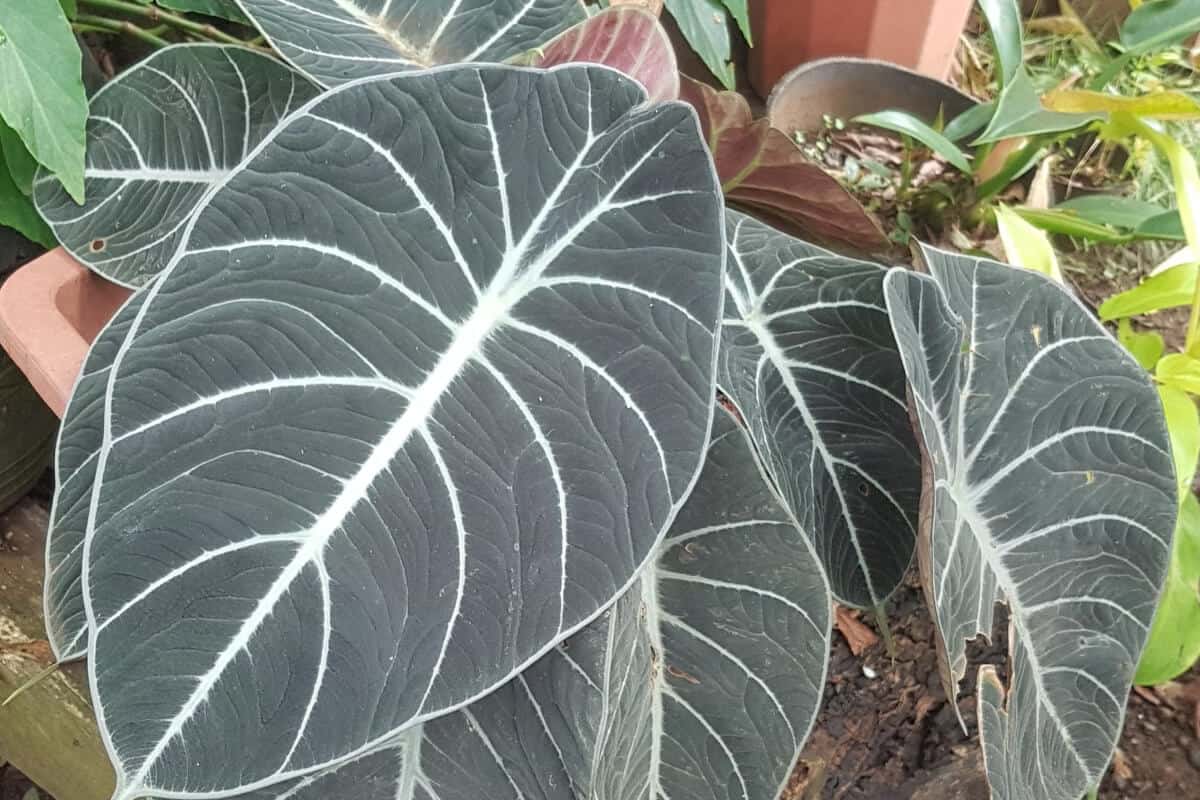
The Alocasia Black Velvet is a very unique species native to the jungles of Borneo that has certainly earned its name.
It is one of the few plants in the world that have black leaves, which can provide a beautiful contrast among bright green plants. The black foliage is soft and velvety and is patterned with silvery veins.
The Alocasia Black Velvet responds well to indirect light and occasional watering. The soil shouldn’t be kept moist at all times as it could cause root rot. Instead, water deeply but only once in a while.
If you follow these few recommendations, this beautiful Alocasia variety will live a long time and grow up to 16 inches tall.
6. Alocasia Frydek (Alocasia Micholitziana)
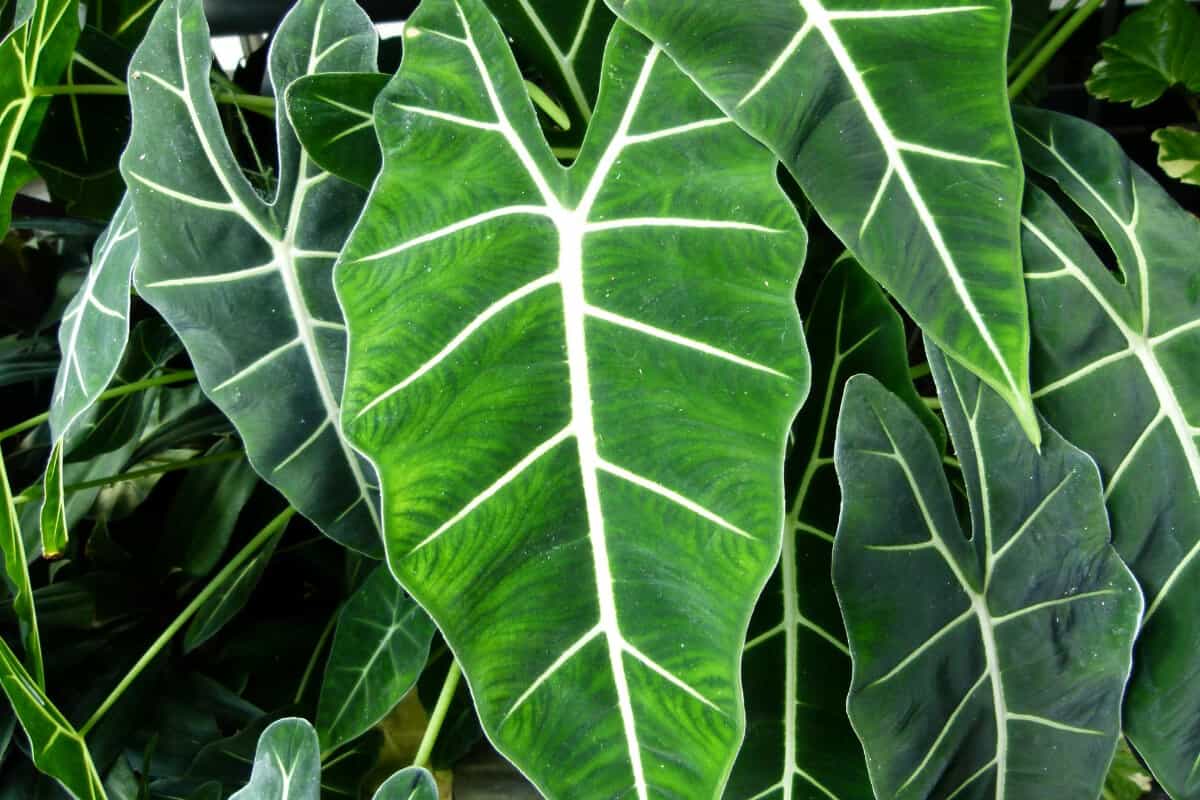
The Alocasia Frydek is also known as Green Velvet Alocasia. Like its close relative, the Black Velvet Alocasia, this species had velvety leaves with white veins.
These leaves are light green when they are young but they become dark green as they mature, and can get quite big.
The Alocasia Frydek is still a rare plant to cultivate indoors but is becoming more and more popular.
These Alocasian plants are native to the tropical rainforests of the Philippines, so it can be difficult to help them thrive.
The most important is to provide bright, indirect sunlight and regular watering. Also, the air should be warm and high in humidity.
7. Purple Passion (Gynura Aurantiaca)
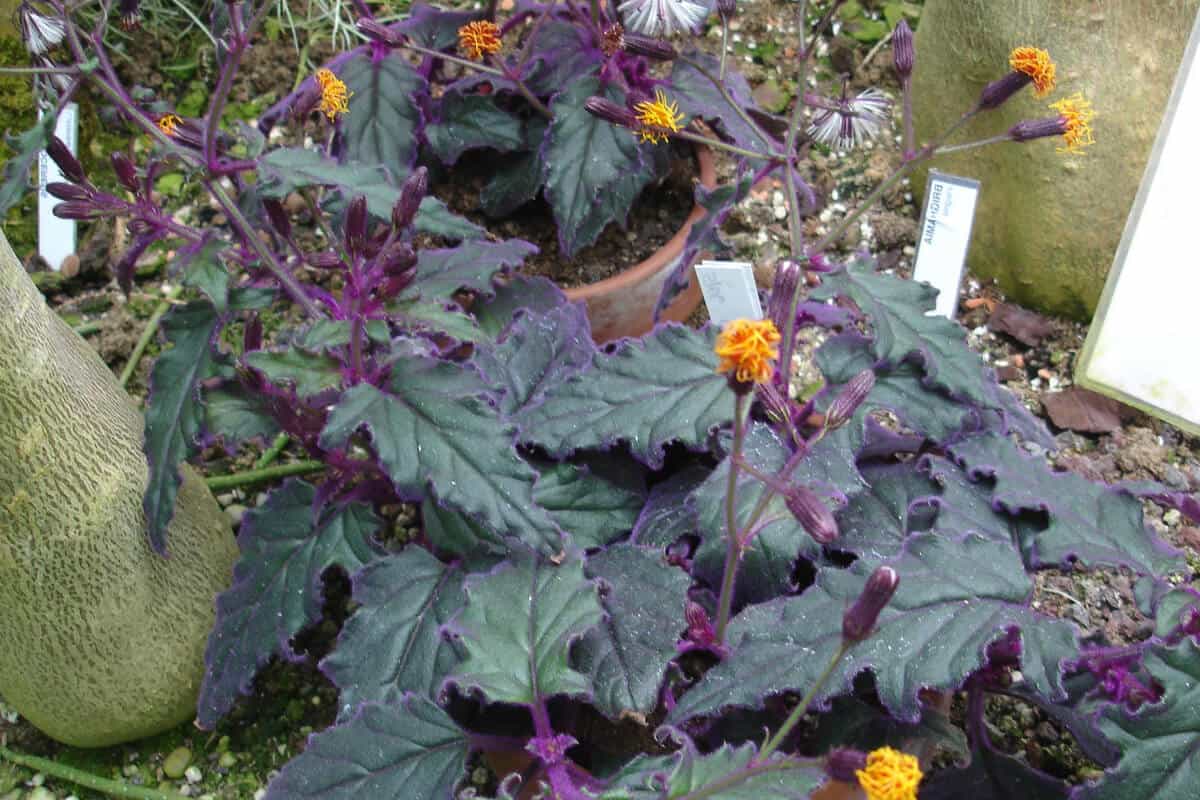
Purple Passion has beautiful thick, velvety leaves that look purple because of the hair that covers them. They are actually green, but the more indirect light the plant receives, the deeper the purple coloration will become.
Purple Passion, also known as Velvet Plant or Gynura, is native to Southeast Asia but it has spread to many areas with a temperate climate. In the South, it even grows wild in some places.
This species has been grown as a houseplant for over 200 years and is perfect for hanging baskets, thanks to its cascading habit.
8. White Velvet Plant (Tradescantia Sillamontana)
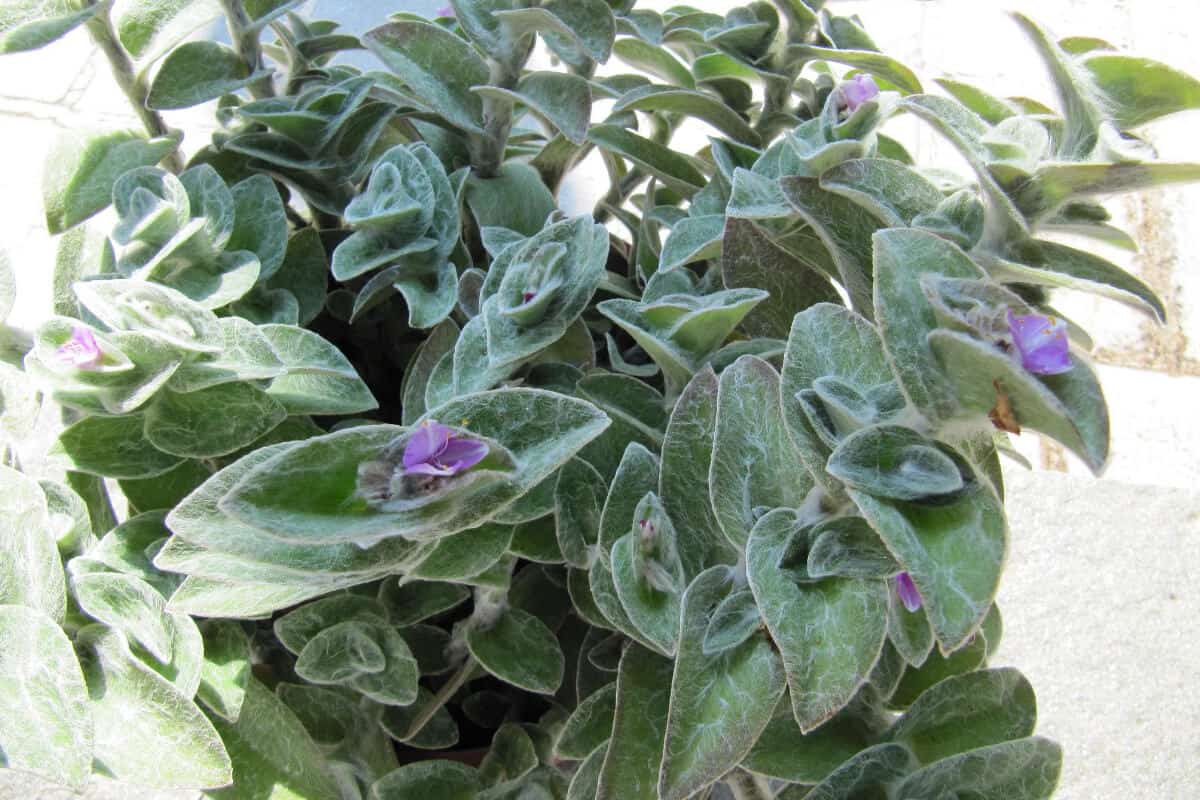
This plant native to Mexico is an evergreen perennial plant with olive-green leaves covered in white, wooly hair.
It can be grown outdoors in warmer climates, where it can be used as ground cover. Otherwise, it’s perfect as a houseplant.
While the primary attraction of the White Velvet Plant is the fuzzy leaves, its beautiful flowers in bright pink color are also really attractive. They bloom in the summer and usually last about a month.
This plant is easy to take care of—just place it in the sun or in partial shade and water moderately.
The trick to maintaining the White Velvet Plants that are compact in size and with silvery leaves is to water sparingly and place them in a sunny spot.
9. African Violet (Streptocarpus Spp.)
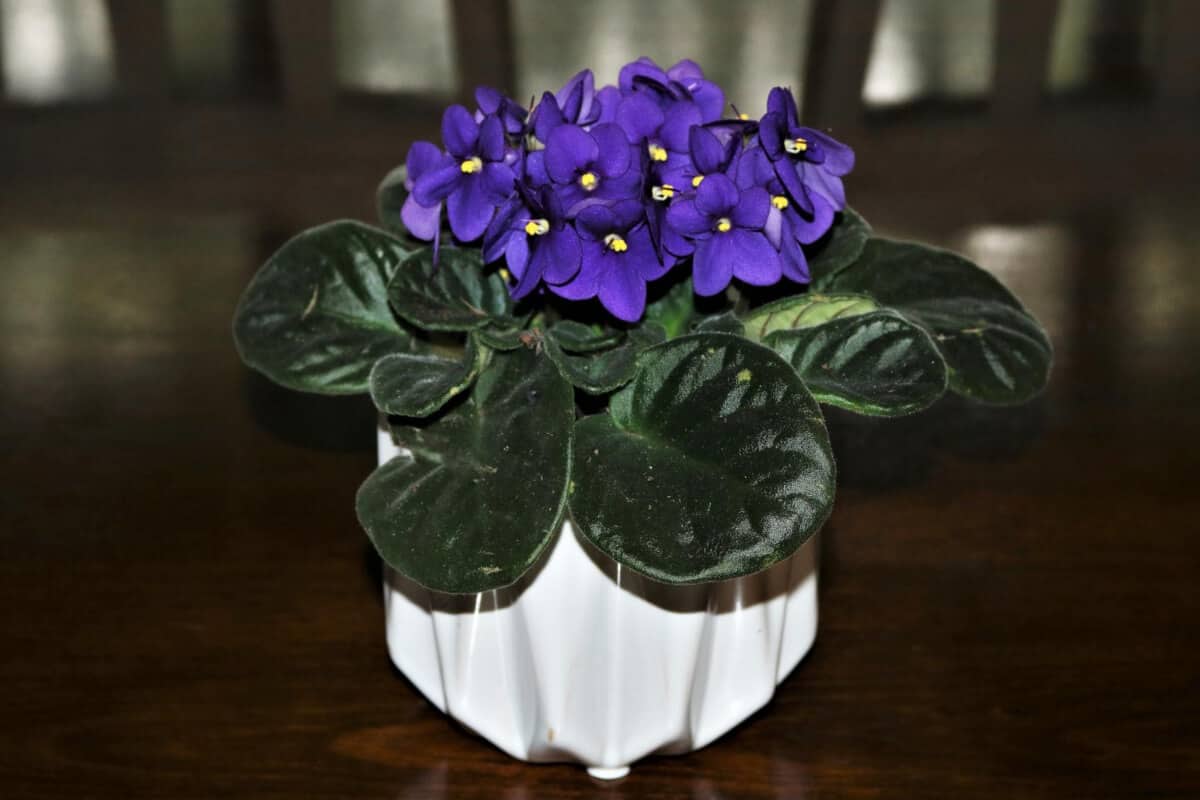
African Violets are small plants that produce clusters of flowers on velvety, deep green leaves. They are not actually a type of violet, even if their flowers can be purple-colored, as well as white or blue.
Their common name does get one thing right—they are originally from Africa. Specifically, they are native to the rainforests of East Africa, particularly Kenya and Tanzania.
You might still hear about them as from the Saintpaulia genus, but they have been recently classified as Streptocarpus.
African Violets have a reputation for being fussy plants, but they can be grown successfully if you know what to avoid.
The most common mistakes are watering them too much and using cold water instead of room temperature. The soil should always be kept slightly moist to encourage flowering, but not too wet. Place the African Violets in a spot with indirect bright light.
10. Vicks Plant (Plectranthus Tomentosa)
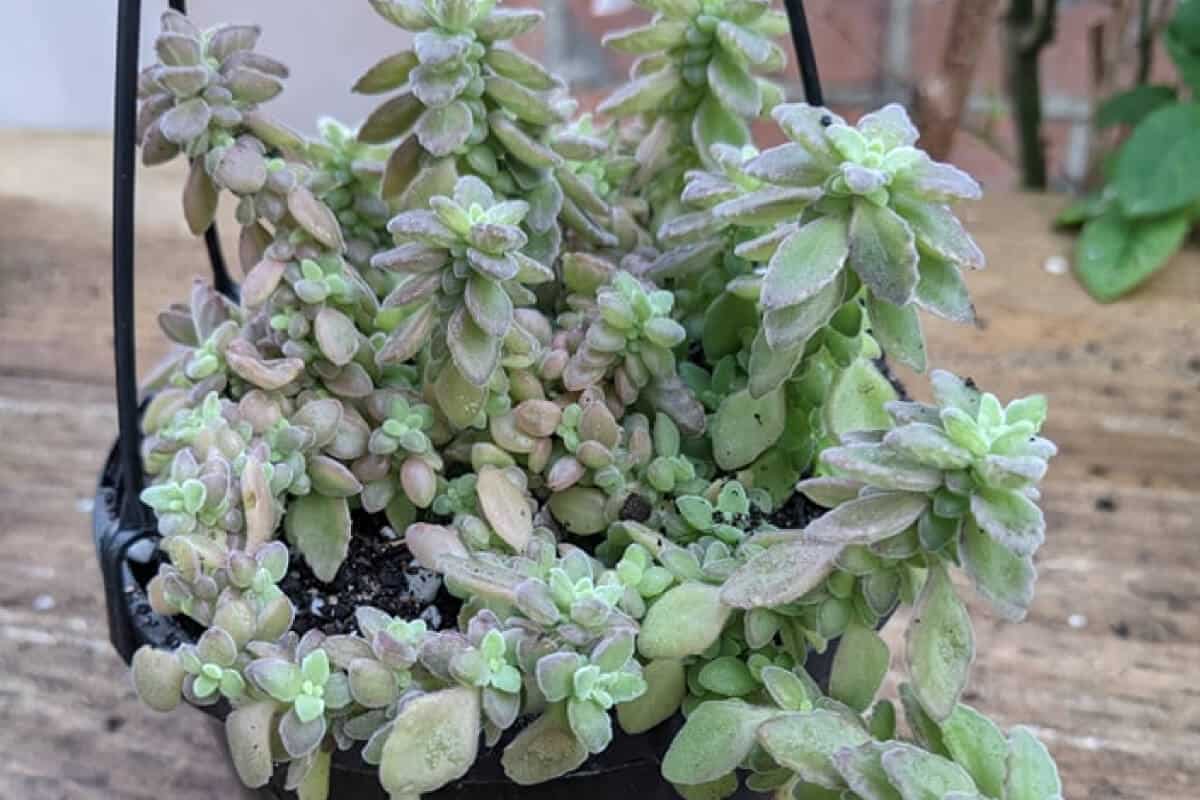
The Vicks Plant is a rare and unusual species native to South Africa.
This perennial plant has a cascading habit that makes it perfect to be grown in hanging baskets or containers.
In the summer, it can be placed outside, but it should be moved indoors in the colder months.
The common name of this plant is derived from its smell of menthol, reminiscent of Vicks Vaporub.
Its small leaves are tender and fleshy, with a rounded shape and fuzzy hairs.
The Vicks Plant blooms twice, in the spring and in the fall, and it attracts butterflies and bees. It shouldn’t be watered too much, as it thrives in warm and dry conditions.
11. Silver Satin Pothos (Scindapsus Pictus)
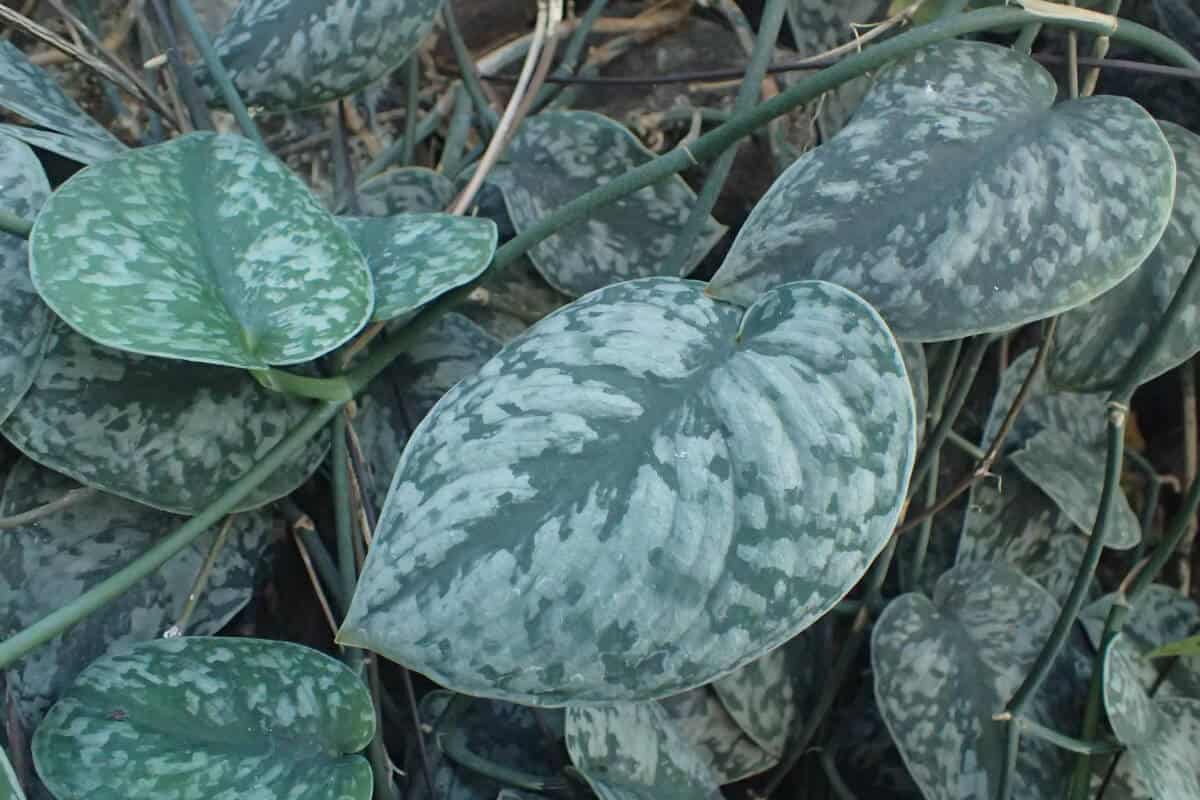
Silver Satin Pothos, also known as Silver Vine, is a perennial, tropical vine and one of the easiest plants to grow indoors in temperate climates.
Its heart-shaped leaves look stunning with their velvety texture and metallic silver splotches. There are different cultivars to choose from with a variety of patterns.
The foliage can be left hanging down from a container or be guided to climb on surfaces such as poles, trellis, or walls. This plant is very low maintenance, perfect if you are a gardening beginner.
12. Panda Plant (Kalanchoe Tomentosa)
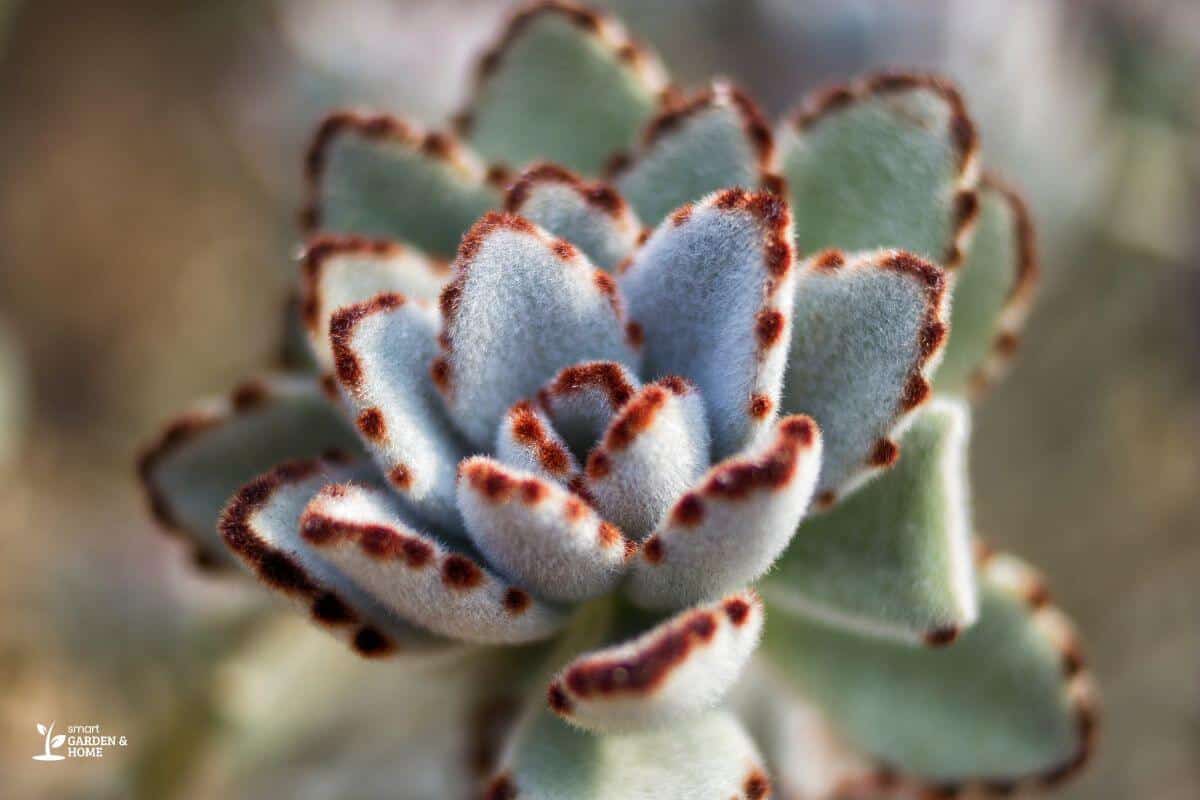
Panda Plant is a succulent plant that is native to Madagascar. Also known as Pussy Ears or Chocolate Soldier Plant, it is named for its fuzzy appearance, which resembles that of a panda’s fur.
Their leaves are covered in velvety, silver-grey hairs, giving them a beautiful texture that’s soft and fuzzy, and dark chocolate brown edges.
To care for a Panda Plant, place it in a bright spot with indirect sunlight. These plants do well in normal room temperatures and can tolerate dry air.
Water the plant only when the soil has dried out completely, which is typically around every 2-3 weeks. Avoid overwatering as this can lead to root rot.
Additionally, it’s important to provide well-draining soil and a pot with drainage holes to prevent standing water.
With proper care, Panda Plants can thrive for years, making it the perfect plant to add a unique touch to any indoor or outdoor garden.
Final Thoughts on Plants With Velvety Leaves
Plants with velvety leaves are not only visually appealing, stunning plants but also have functional benefits.
The soft texture of their leaves makes them irresistible to the touch and adds a unique sensory experience to any garden or indoor space.
African Violets, Philodendrons, Alocasias, and succulents are some of the popular plants with velvety leaves.
It’s important to keep them away from direct sunlight and to water them sparingly to take care of these plants.
Adding velvety plants to your indoor plant collection is sure to make your space more inviting and vibrant, regardless if you’re a seasoned gardener or a beginner.
So go ahead and indulge in the luxurious feel of velvety leaves and transform your garden or living space into a cozy haven of beauty and serenity!
Read these articles for more information about plants for your garden:

